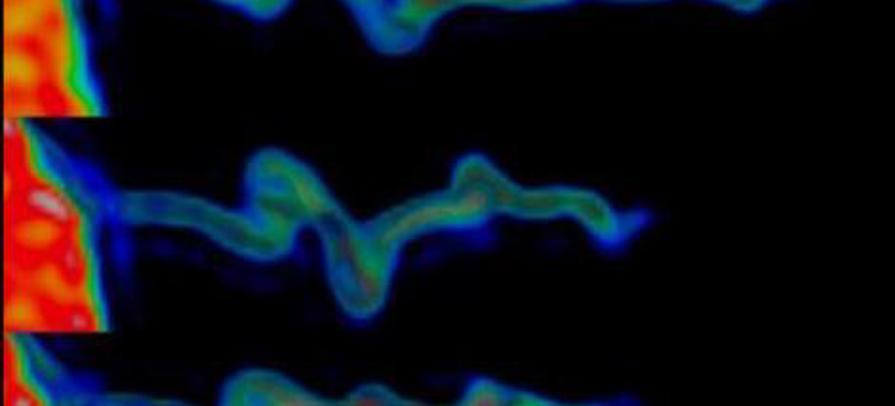Grein um, hvussu kyknur kunnu føla sítt umhvørvi
Poul Martin Bendix, granskari á Niels Bohr Instituttinum í København, hevur saman við øðrum skrivað grein um, hvussu kyknur “føla” sítt umhvørvi við at nýta fingralíknandi strukturar. Granskingin vísir, hvussu hesir fingralíknandi strukturarnir, sum kallast filopodia, kunnu toyggja seg, styttast og bendast í dynamiskum rørslum.
Greinin sum er á økinum lívalisfrøði kallast “Helical buckling of actin inside filopodia generates traction” og sæst í tíðarritinum Proceedings of the National Academy of Sciences - PNAS (krevur hald) Høvundarnir eru Natascha Leijnse, Lene B. Oddershede og Poul Martin Bendix. Tey eru partur av granskingartoyminum Biocomplexity á Niels Bohr Instituttinum.
Les um Poul Martin Bendix í Heilagrunninum
Enskur samandráttur
Cells can interact with their surroundings via filopodia, which are membrane protrusions that extend beyond the cell body. Filopodia are essential during dynamic cellular processes like motility, invasion, and cell–cell communication. Filopodia contain cross-linked actin filaments, attached to the surrounding cell membrane via protein linkers such as integrins. These actin filaments are thought to play a pivotal role in force transduction, bending, and rotation. We investigated whether, and how, actin within filopodia is responsible for filopodia dynamics by conducting simultaneous force spectroscopy and confocal imaging of F-actin in membrane protrusions. The actin shaft was observed to periodically undergo helical coiling and rotational motion, which occurred simultaneously with retrograde movement of actin inside the filopodium. The cells were found to retract beads attached to the filopodial tip, and retraction was found to correlate with rotation and coiling of the actin shaft. These results suggest a previously unidentified mechanism by which a cell can use rotation of the filopodial actin shaft to induce coiling and hence axial shortening of the filopodial actin bundle.
